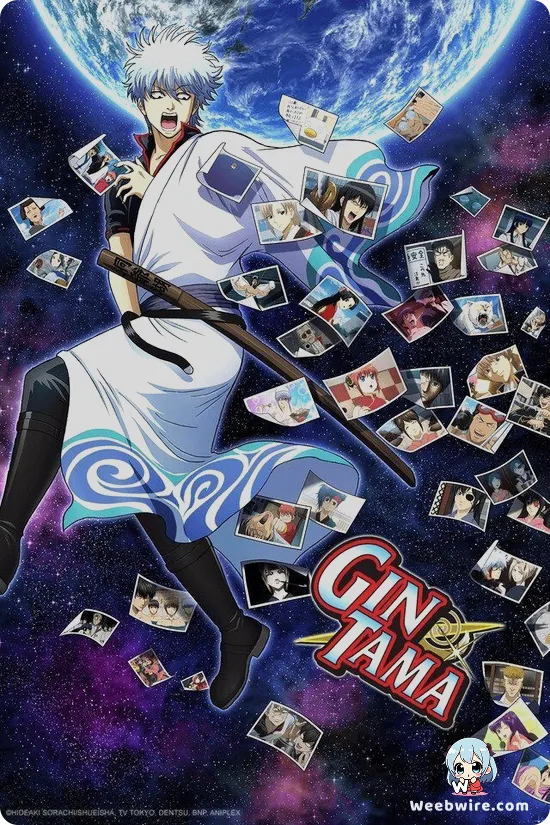The Enduring Genius of 'Sayonara, Zetsubou-Sensei': A Landmark in Anime Satire

In the vibrant tapestry of anime, certain series transcend conventional storytelling, carving out a distinctive niche with their audacious vision and unique comedic flair. Among these groundbreaking works, Koji Kumeta's 'Sayonara, Zetsubou-Sensei' (Goodbye, Mr. Despair) stands as a monumental achievement, a masterclass in satirical brilliance brought to life by the avant-garde animation studio, Shaft. Far from being a mere high school comedy, this series serves as a meticulously crafted satirical mirror, reflecting the intricate absurdities and societal quirks of modern Japan, brimming with layers of hidden meaning and remarkable production insights.
The Heart of Despair: Characters and Commentary
Central to 'Sayonara, Zetsubou-Sensei' is Nozomu Itoshiki, an archetypal perpetually pessimistic high school teacher who unearths despair in every imaginable scenario, from the fleeting beauty of cherry blossoms to the mundane aspects of personal hygiene. His classroom is a microcosm of society, populated by a diverse, albeit delightfully dysfunctional, array of students, each embodying a distinct societal trope or psychological oddity. From the irrepressibly optimistic Kafuka Fuura to the obsessively orderly Chiri Kitsu, their interactions fuel the series' rapid-fire comedic timing, its relentless cascade of pop culture references, and its incisive, often darkly humorous, social commentary. Many viewers may not immediately grasp the profound depth of Kumeta's satirical targets, which span a vast spectrum from contemporary political scandals and economic anxieties to the burgeoning otaku culture and the sensationalism of modern media. A comprehensive appreciation often necessitates a nuanced understanding of early 21st-century Japanese society to fully decipher each cleverly delivered jab.
Shaft's Vision: A Masterclass in Adaptation
A hallmark of the anime's brilliance lies in its seamless integration of Koji Kumeta's distinctive artistic and narrative voice. Kumeta, celebrated for his previous works, possesses a singular brand of humor characterized by verbose monologues, intricately designed visual gags, and a penchant for meta-commentary. Shaft's adaptation, spearheaded by the visionary director Akiyuki Shinbo, didn't merely animate the manga; it transformed it. Shinbo's iconic directorial style, marked by characteristic head tilts, abstract backdrops, rapid on-screen text overlays, and subtly expressive character animations, perfectly complements Kumeta's satirical narrative. This synergy culminates in a visual experience that is both exhilaratingly chaotic and meticulously orchestrated, frequently inundating the viewer with information while simultaneously delivering punchlines with astonishing speed. The legendary 'Shaft head tilt,' a recurring visual motif, has since become inextricably linked with the series' unique aesthetic.
Layers of Meaning: Puns and Rewatchability
Moreover, the series is an abundant repository of linguistic and visual puns, many of which pose considerable challenges in translation or localization. For example, Nozomu Itoshiki's name itself, when written horizontally, ingeniously spells 'zetsubou,' or despair, a brilliant, self-referential nod to his character. This sophisticated wordplay is intricately woven throughout the dialogue and even subtly embedded within the background visuals, generously rewarding attentive viewers and those with a keen ear for Japanese linguistics. The sheer density of these references ensures that a single viewing is rarely sufficient to capture every joke, imbuing the series with immense rewatch value for its dedicated fanbase.
Beyond the Screen: Openings, Voice Acting, and Bold Themes
The anime's innovative use of opening and ending sequences further distinguishes it. Far from being mere thematic bookends, these segments often function as self-contained mini-episodes, featuring their own unique animation styles, surreal imagery, and frequently, additional layers of biting satire. The diverse array of musical artists and visual directors contributing to these sequences underscores Shaft's creative freedom and their unwavering willingness to experiment. The openings, in particular, frequently showcase abstract, almost psychedelic visuals that flawlessly encapsulate the series' off-kilter world.
Exceptional voice acting also plays a crucial role in animating the series' eccentric ensemble. Hiroshi Kamiya's iconic portrayal of Nozomu Itoshiki is nothing short of masterful; his nuanced delivery, adept at conveying both profound despair and razor-sharp deadpan sarcasm, is fundamental to the character's enduring appeal. The supporting cast, featuring stellar talents such as Ai Nonaka as Kafuka Fuura and Marina Inoue as Chiri Kitsu, also delivers memorable performances, each skillfully capturing the distinctive quirks of their respective characters. The ensemble's undeniable chemistry elevates the already sharp dialogue, transforming rapid-fire exchanges into comedic brilliance.

'Sayonara, Zetsubou-Sensei' also gained renown for its bold and often controversial approach to sensitive topics. While consistently presented through a comedic lens, the anime frequently delves into themes such as suicide, social anxiety, conformity, and political apathy. This fearless exploration, coupled with its distinctive brand of humor, solidified its status as a quintessential cult classic. The series never shies away from making a poignant point, even if that point is delivered through a character contemplating hanging themselves from a cherry tree or a discussion on the merits of being a hikikomori.
Even the production timeline and the sheer volume of output from Shaft during this era are remarkable. 'Sayonara, Zetsubou-Sensei' impressively spawned three television seasons and several original video animations (OVAs) in relatively rapid succession, a clear testament to its immense popularity and the studio's formidable efficiency. This consistent output allowed the anime to explore the depths of Kumeta's expansive narrative and extensive character roster, ensuring that no facet of societal absurdity remained unexamined. The enduring allure of 'Sayonara, Zetsubou-Sensei' resides in its intellectual humor, its distinctive visual artistry, and its unwavering dedication to satirizing the human condition. It stands as a paramount example of how anime can transcend simple entertainment, evolving into a sharp, insightful, and infinitely rewatchable piece of social commentary, teeming with more hidden gags and clever references than one could ever hope to uncover in a single sitting.
Credits
Sayonara, Zetsubou-Sensei
Author
Koji Kumeta
Cover Art
Koji Kumeta
Studio
Shaft
Publisher
Kodansha
Producers





